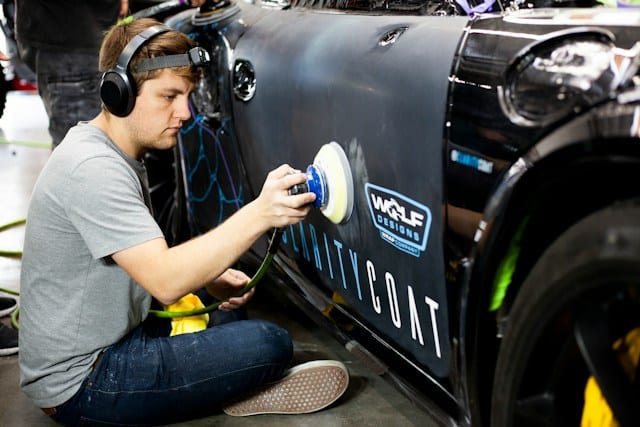The Science Behind Car Paint Matching
 Car paint matching is an art and a science, crucial in the world of autobody repair. Whether it’s due to a minor scratch or a major repair, matching the existing paint on a car is essential for a seamless and professional finish. This process involves a combination of technology, skill, and an understanding of color theory.
Car paint matching is an art and a science, crucial in the world of autobody repair. Whether it’s due to a minor scratch or a major repair, matching the existing paint on a car is essential for a seamless and professional finish. This process involves a combination of technology, skill, and an understanding of color theory.
The Complexity of Automotive Paint
Automotive paint is more complex than it might appear. It’s not just about matching a single color. Modern vehicles often have a base coat (the color), a mid-coat (additional tints or effects), and a clear coat (for protection and shine). This multi-layer structure adds depth and luster but makes matching the paint more challenging.
Color Matching Technology
Advancements in technology have significantly improved the paint-matching process. Body shops use spectrophotometers, devices that analyze the color of the vehicle’s existing paint. This analysis provides a formula that can be used to mix paint that matches precisely. However, factors like fading due to sun exposure can still pose challenges.
The Role of Human Expertise
Despite technological advancements, the human element remains crucial. Experienced technicians can adjust the formula based on their understanding of how different factors affect color appearance. They consider elements like the age of the car, the type of paint originally used, and how exposure to elements has altered the original color.
Understanding Color Theory
Color theory plays a significant role in paint matching. It’s not just about finding a color that looks the same. Technicians must understand hues, saturation, and brightness to create a match that blends seamlessly. They often have to mix multiple colors to achieve the right shade.
The Importance of Lighting
Lighting conditions significantly affect how we perceive color. For accurate paint matching, it’s essential to view the car and the paint under various types of light. This includes natural sunlight, fluorescent light, and incandescent light, as each can change how the color appears.
Paint Mixing Process
Once the color is matched, the paint must be mixed precisely. This process involves adding the correct proportions of each pigment and binder as per the formula. Even a small deviation can result in a noticeable difference in color once applied to the car.
Application Techniques
The application of the paint also affects the final appearance. Factors like the angle of the spray gun, the distance from the car, and the number of coats all play a role. Matching the original paint’s texture is just as important as matching the color.
Final Checks and Adjustments
After the paint is applied, final checks are necessary. This may involve making slight adjustments to ensure a perfect match. Sometimes, blending the new paint into the surrounding areas is required to make the repair invisible.
Conclusion
Car paint matching is a complex process that blends science and art. It requires advanced technology, skilled technicians, and a deep understanding of color and light. The goal is to make the car look as if it was never damaged, maintaining its aesthetic appeal and value. Understanding this process highlights the expertise and precision involved in professional autobody repair.
